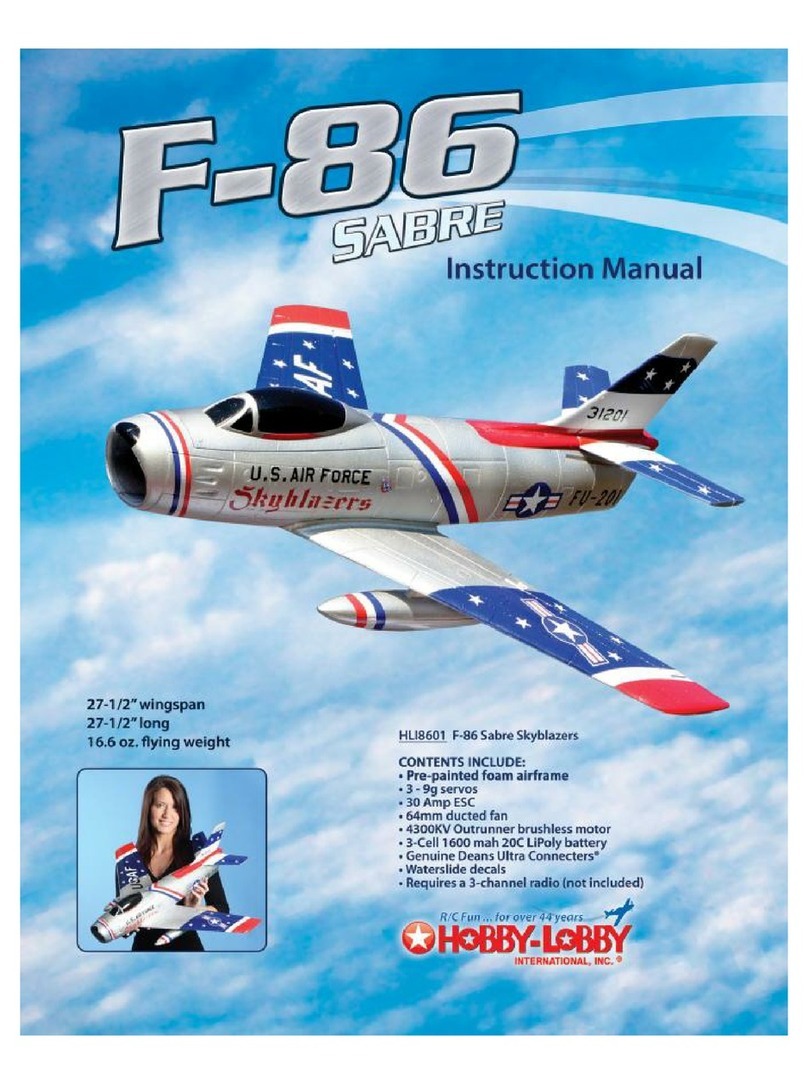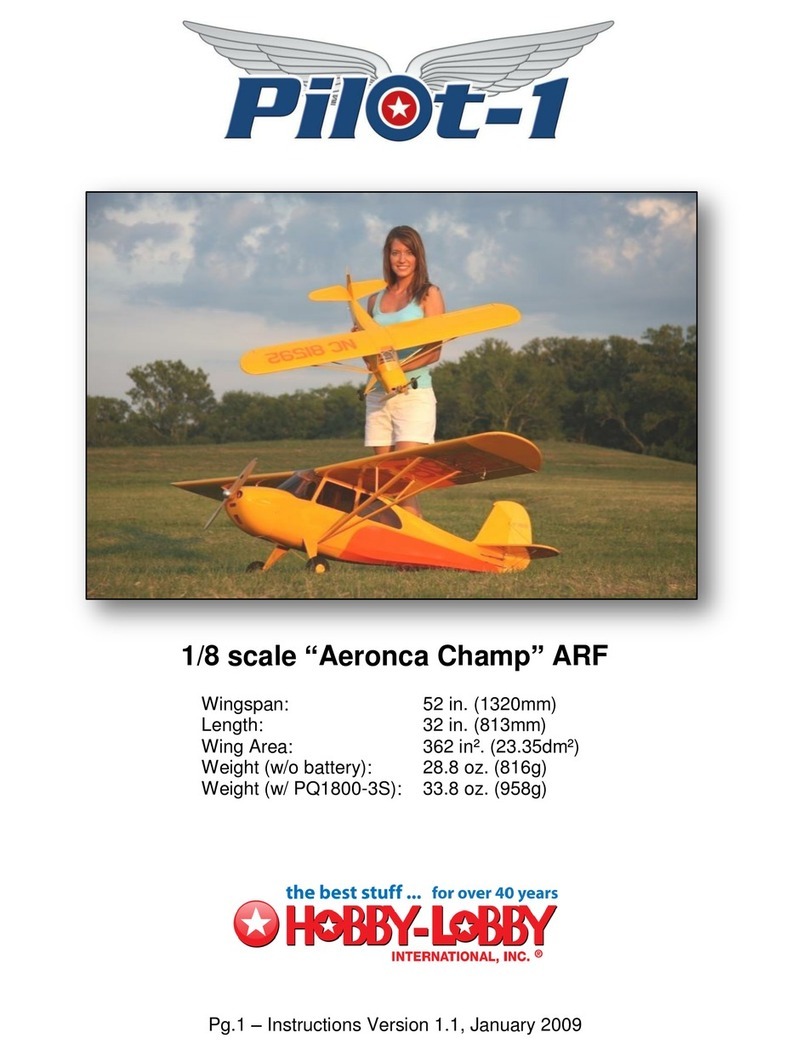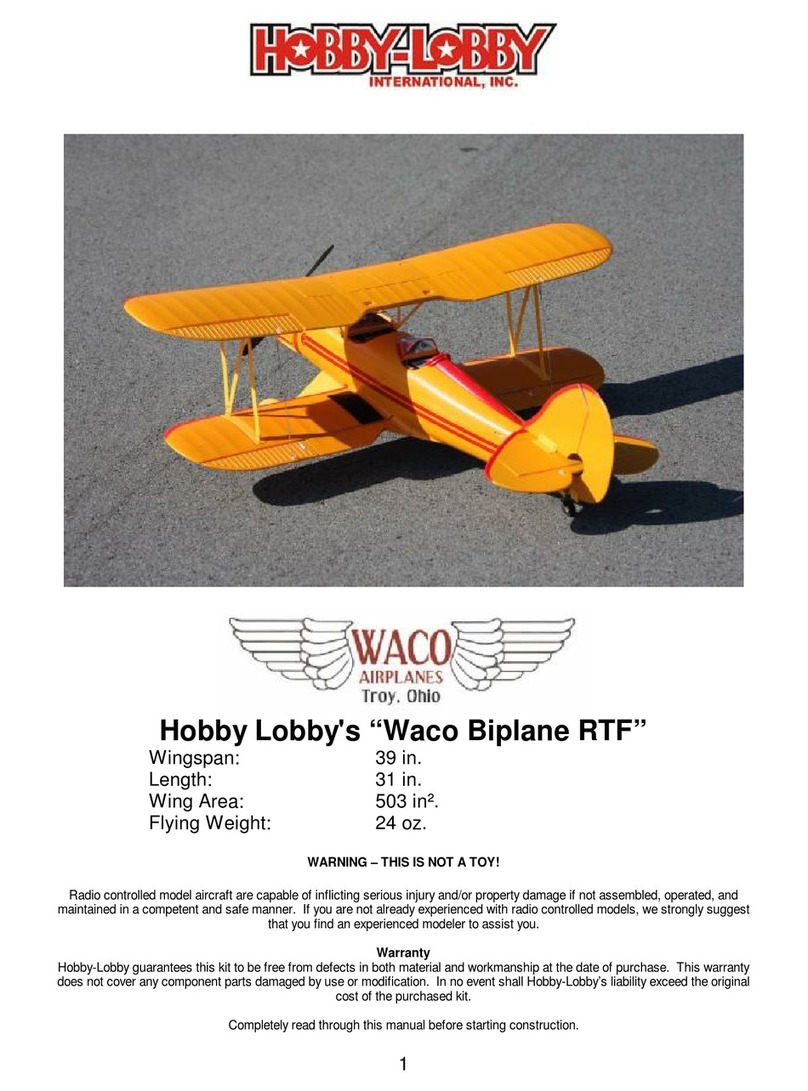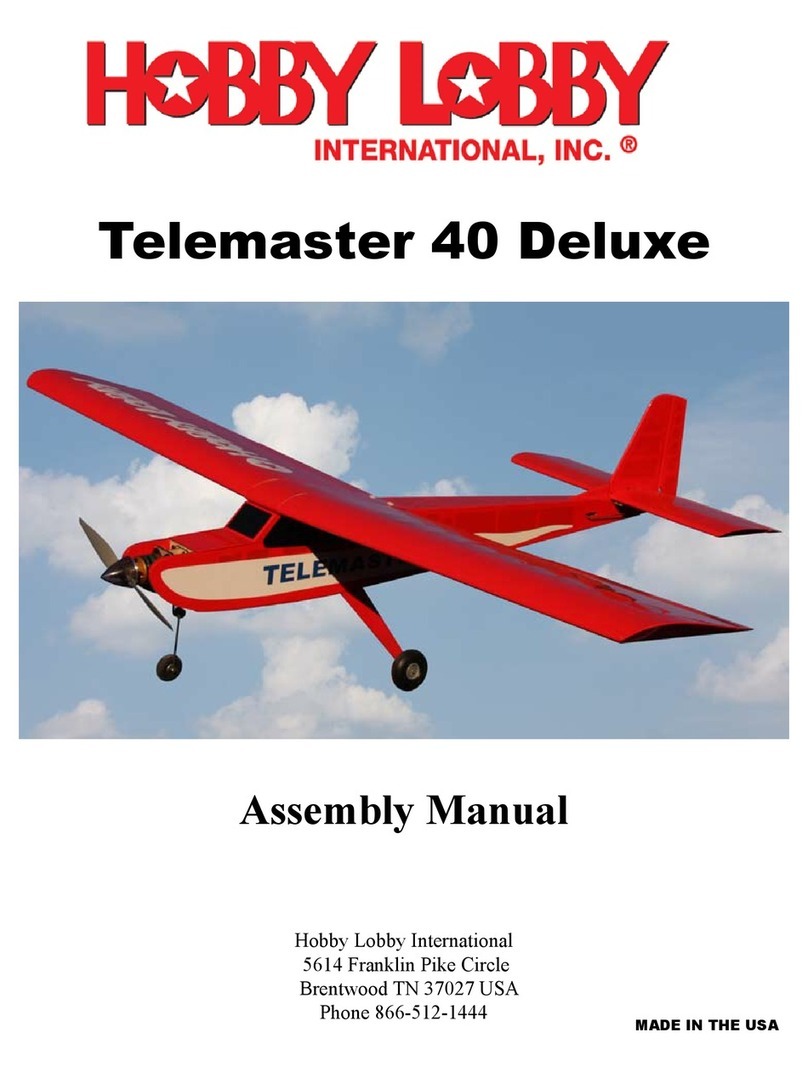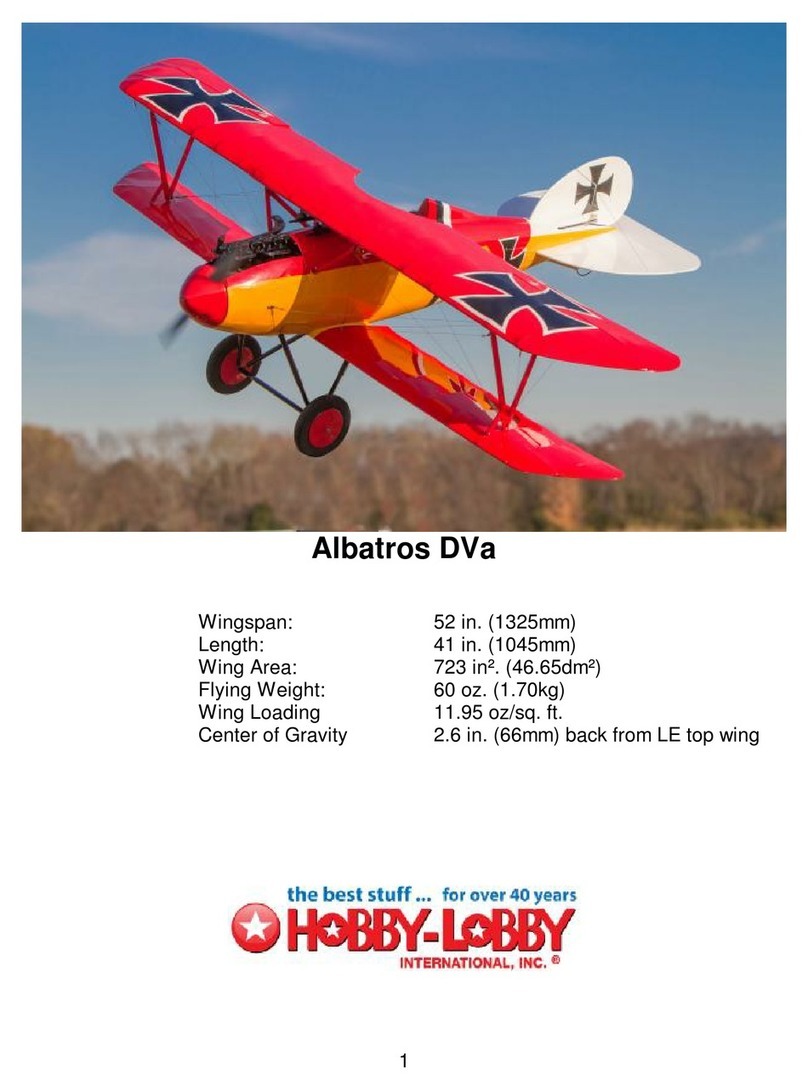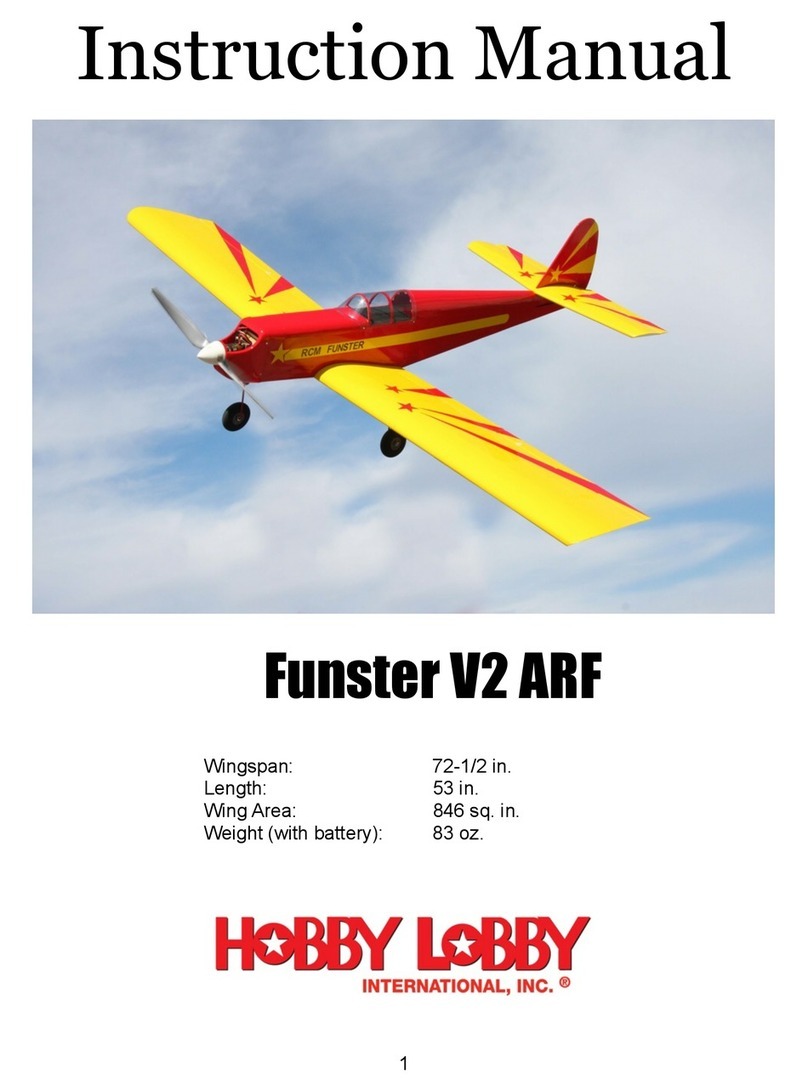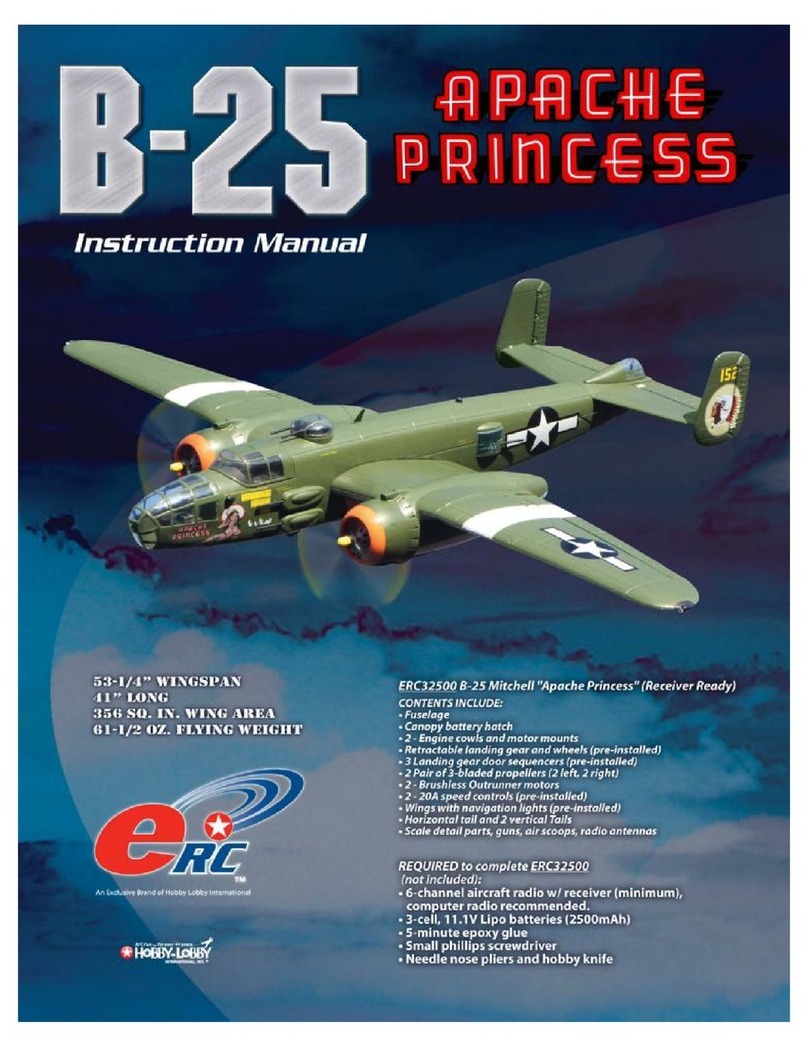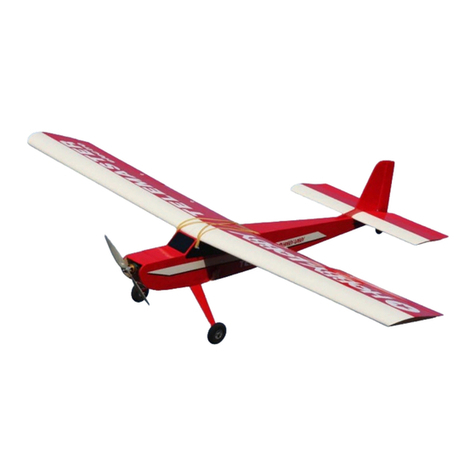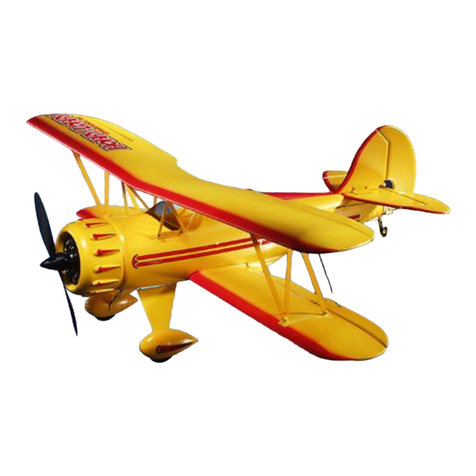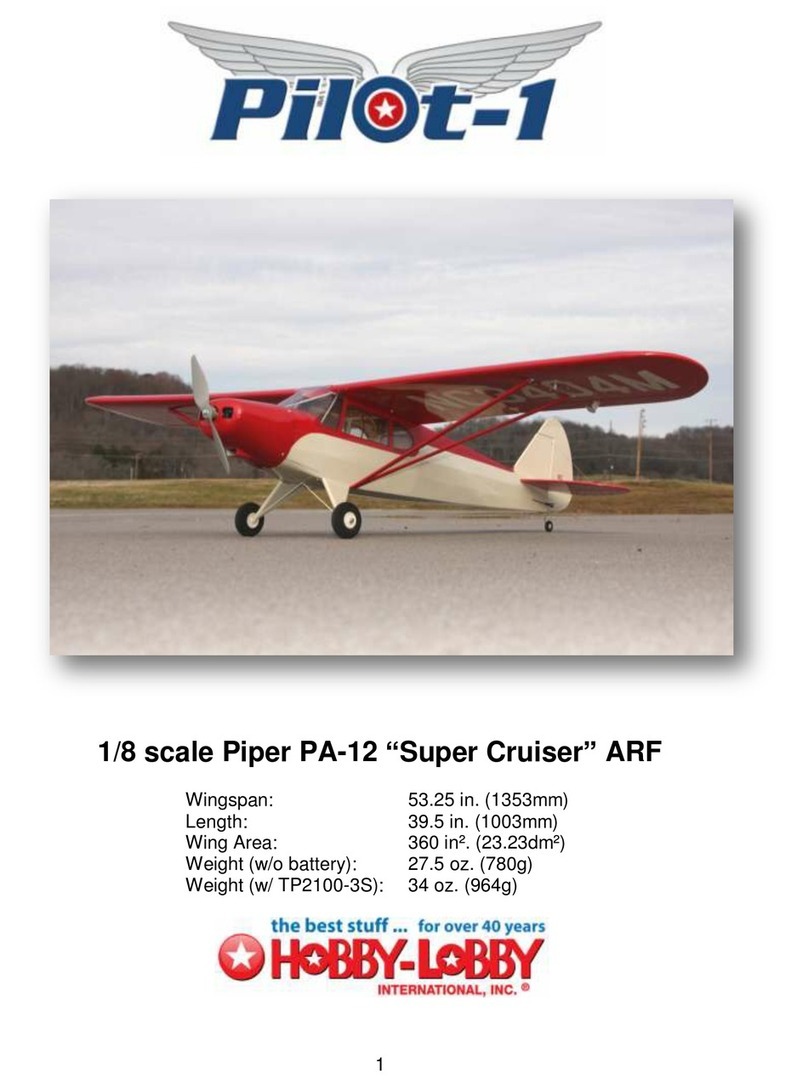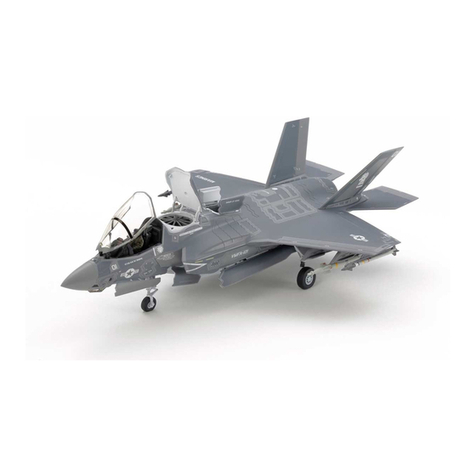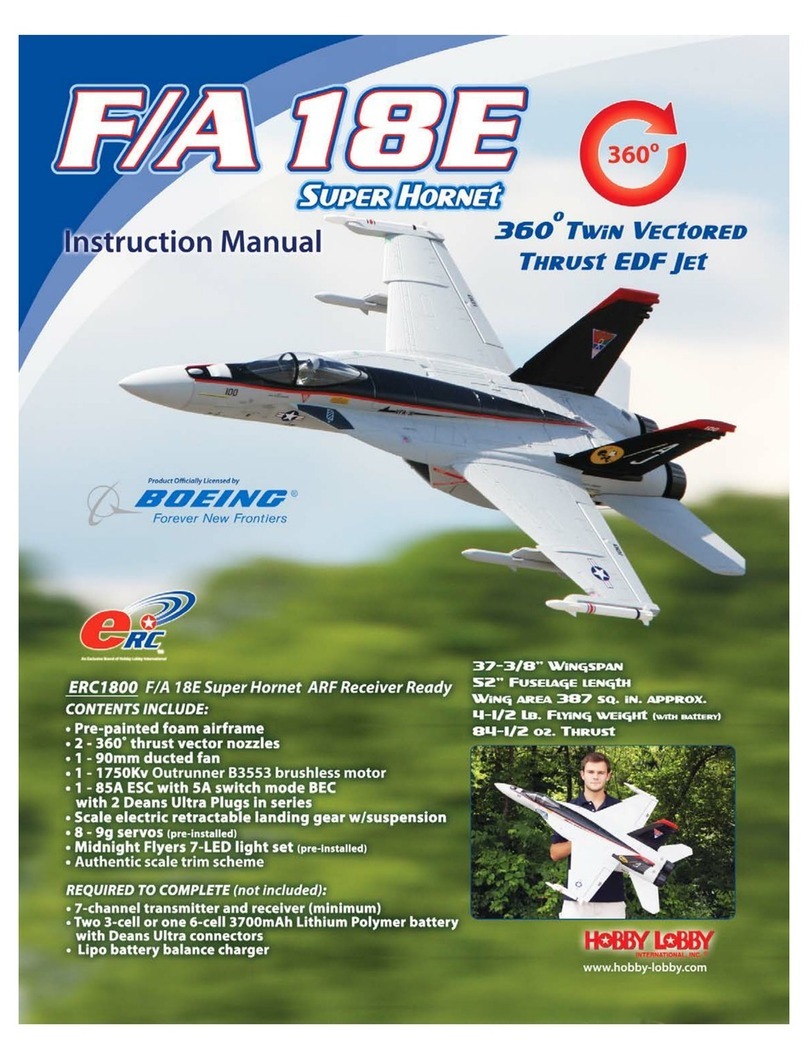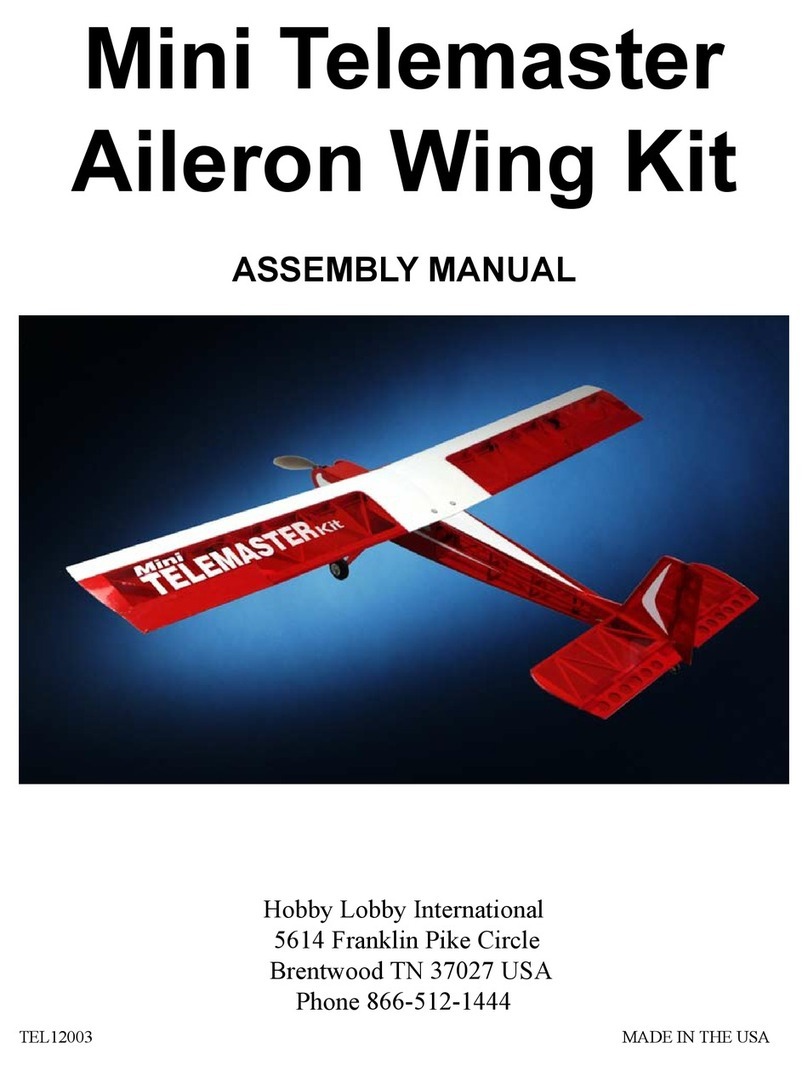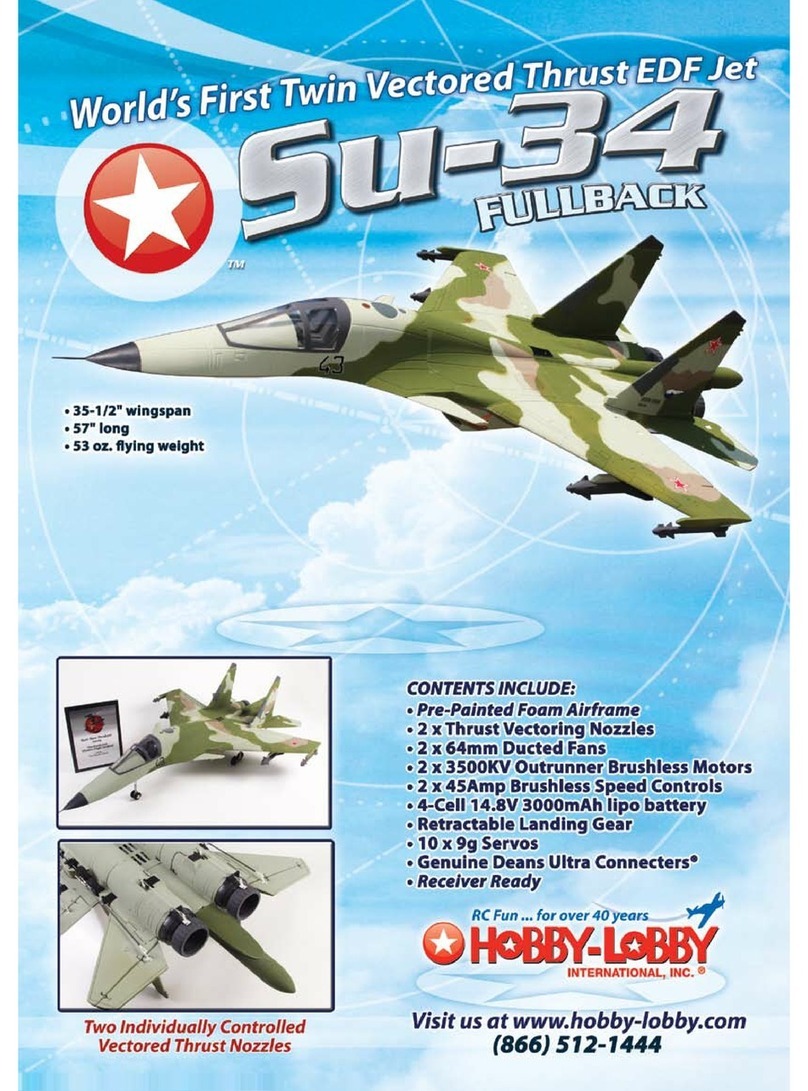2
Thank you for your purchase of the eRC Rebel 70
Sport Jet. This jet is designed for the intermediate to
advanced pilot. A great deal of the aircraft is pre-
built and only requires some simple assembly and
the programming of your radio equipment to be
ready to fly. Please read the assembly manual
carefully to familiarize your self with all the steps
before starting.
Safety Statement
1. This is not a toy. It is for experienced modelers only. You are responsible for the safe
operation of this model and any damage or harm it may cause.
2. Before flying the Rebel 70 for the first time please read through the instructions carefully
and make sure that your radio equipment is working properly and has been range tested
prior to flight.
3. Young people under the age of 14 should only be permitted to operate this model under
the instruction and supervision of an adult with modeling experience.
4. Please keep these instructions for future reference after completing the assembly. They
contain information critical to the safe operation of this model.
5. If you have any further questions regarding the safe operation of your RC model, please
contact your local hobby shop, flying club or Hobby Lobby International for professional
help and advice.
Safety Precautions!
1. Do not fly in strong wind or bad weather.
2. Never fly the model in crowded areas where there are lots of people, automobiles on the
road or power lines overhead. Do not fly near full-scale airports.
3. Make sure that you have enough open area for flying as the model can travel at a high
rate of speed and cover a lot of area quickly. Initial flights should be made in an area
with a minimum size of a football field.
4. This model is not recommended for children under the age of 14.
5. When charging the LiPo batteries, always charge them on a non-flammable surface and
monitor the charge process. Improper charging of LiPo batteries is dangerous and can
lead to a fire!
6. The Rebel 70 is made from EPO foam and plastic. These materials are flammable and
can be damaged by high heat. Never leave your jet near a heat source or in an
automobile.
7. Do not attempt to catch your airplane while flying.
8. Never leave your Rebel 70 unattended when ready for flight.
9. When preparing for flight, always turn on your transmitter first and make sure that your
throttle is in the off position prior to plugging in the flight battery. Failure to follow this
step may lead to unintended motor start and damage to the model.
